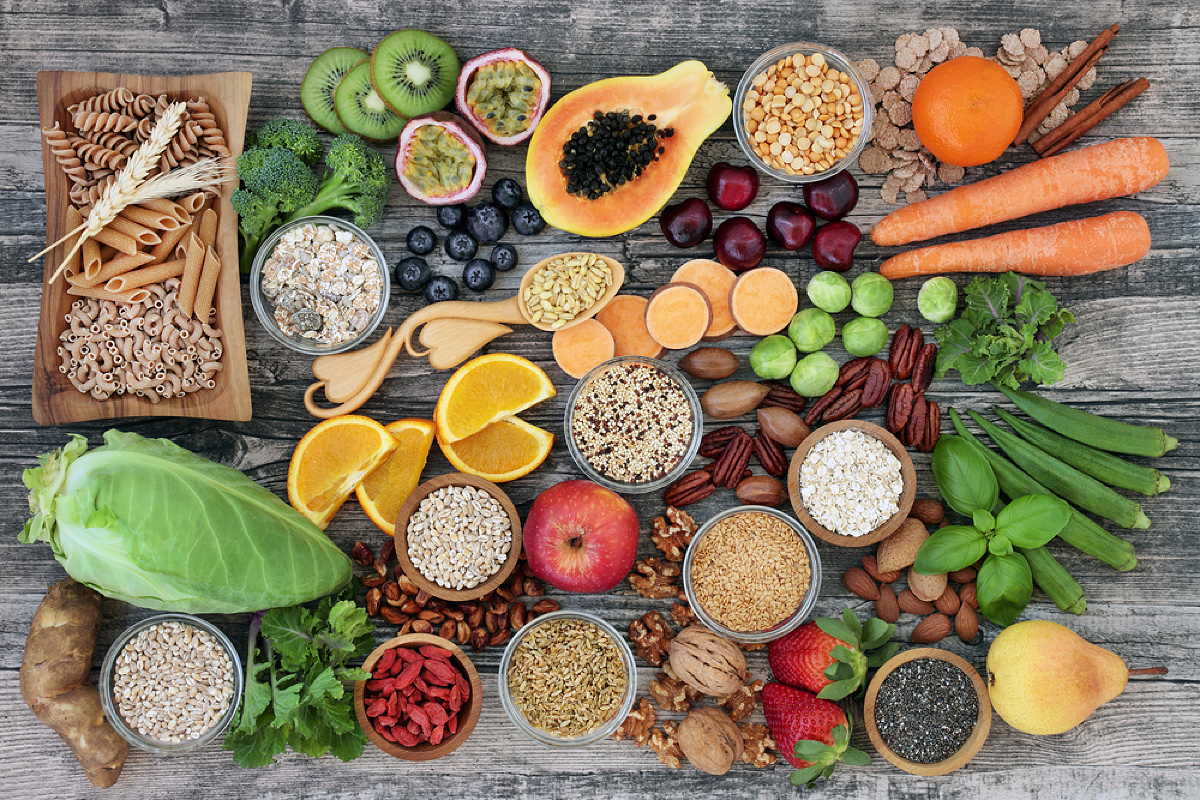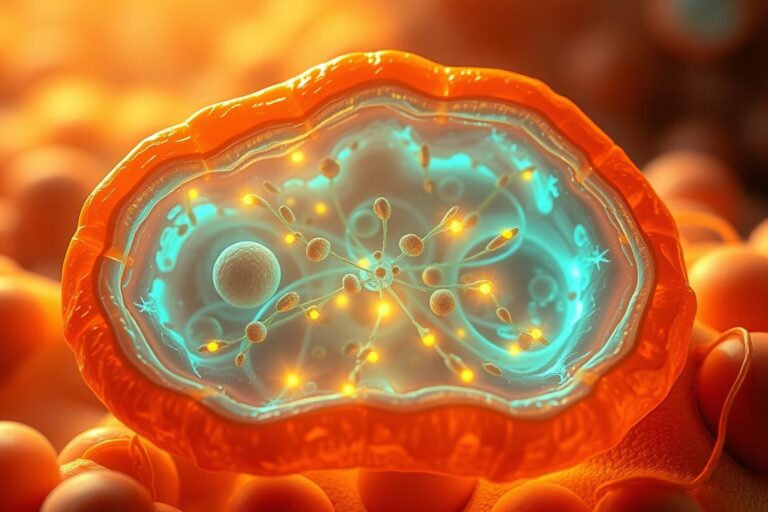Dietary fiber: The underestimated helpers in the gut
You may have heard that fiber is good for digestion, but do you know how important it really is for your gut health? The truth is that most people today consume less than half the fiber they used to.
This decline has serious consequences for our health and especially for our gut. A lack of these important fibers can not only lead to digestive problems, but also disrupt the balance of important bacteria in our intestines.
In this article you will learn why fiber is crucial for your diet and health and how you can effectively integrate it into your everyday life to support your digestion and promote your gut health.
What is dietary fiber and why is it important?
You may have heard of dietary fiber, but do you know what it actually is and why it is so important for your health? Dietary fiber is a component of food that cannot be broken down by the body’s enzymes.
Definition and basics
Dietary fibers are indigestible carbohydrates found in plant-based foods. They play an important role in digestion and help to keep the intestines healthy. A sufficient intake of dietary fiber is important for a healthy diet.
Eating fiber supports intestinal health and can help prevent various health problems. A high-fiber diet can also contribute to satiety and thus help with weight control.
The historical development of our fiber intake
In the past, diets were much richer in fiber than they are today. In our western latitudes, there used to be significantly more cereals on the menu in the form of porridge, soups and, above all, high-quality bread. These foods were rich in fiber.
Dietary fiber intake has changed dramatically: People used to consume about 80 grams of fiber per day, but today the average is only about 25 grams for men and about 23 grams for women. This development is closely linked to changes in our eating habits.
- Modern flour production removes the fiber-rich husk from the grain kernels.
- Wholemeal products were replaced by white flour products.
- Highly processed foods have replaced natural, fiber-rich foods.
Soluble and insoluble fiber: the difference
When talking about fiber, you need to distinguish between two main types: soluble and insoluble fiber. Both play an important role in your diet and have different effects on your digestion.
Properties of soluble dietary fiber
Soluble fiber dissolves in water and forms a kind of gel that affects your digestion. They are mainly found in foods such as fruit, vegetables and oats. Thanks to their ability to bind water, they can regulate your bowel movements and support your intestinal flora.
Some of the most important properties of soluble fiber are:
- They dissolve in water and form a gel.
- They are mainly found in fruit, vegetables and oats.
- They support your intestinal flora and regulate your bowel movements.
Properties of insoluble dietary fibers
Insoluble fiber, on the other hand, such as lignin and cellulose, is mainly found in whole grain products and is only slightly broken down by the intestinal flora. As a result, they retain their swelling properties and their influence on stool volume up to the rectum.
Some important points about insoluble fiber are:
- They largely retain their structure during intestinal transit.
- They are mainly found in whole grain products, bran, nuts and the skins of fruit and vegetables.
- They act like a natural sponge by absorbing water and increasing stool volume, which stimulates bowel movement.
Dietary fiber as a helper in the intestine: how it works
In the intestine, dietary fiber acts as a natural helper that promotes the movement of food pulp. They play a crucial role in maintaining healthy digestion and intestinal function.
Mechanical effect on digestion
Dietary fiber swells with liquid and increases the volume of stool. This effect ensures that the bowel is well filled and the muscles around the bowel are stimulated to transport the contents further. Your intestinal wall consists of two muscle layers – a longitudinal and a ring muscle – whose coordinated movement ensures the transportation of the food chyme through your body.
- Dietary fiber serves as a natural training partner for these muscles by exerting a mechanical stimulus through its volume.
- The more fiber you eat, the better your intestinal muscles are trained and the more efficiently they work.
Influence on the intestinal muscles
The positive influence of fiber on your intestinal muscles not only has an effect on digestion, but also supports general intestinal health and can prevent intestinal sluggishness. A low-fiber diet lacks this training stimulus, which can lead to a weakening of the intestinal muscles in the long term.
- Sufficient fiber intake is therefore important to strengthen the intestinal muscles and promote healthy digestion.
- By regularly consuming fiber, you can support the health of your intestines and prevent digestive problems.
The role of fiber for your intestinal flora
Dietary fiber plays a crucial role in the health of your intestinal flora. They serve as food for the intestinal bacteria and support their diversity and activity.
Dietary fiber as food for intestinal bacteria
Your gut bacteria rely on fiber to thrive. When you eat enough fiber, you promote the growth and diversity of beneficial bacteria in your gut.
A diverse intestinal flora is important for good health, as it supports digestion and strengthens the immune system.

Production of short-chain fatty acids and their importance
When your intestinal bacteria ferment fiber, short-chain fatty acids such as butyrate, propionate and acetate are produced. These substances are real health boosters for your body.
Butyrate is particularly important as it serves as the main source of energy for the cells of your intestinal mucosa. It covers over 70% of their energy requirements. These short-chain fatty acids strengthen your intestinal barrier, have an anti-inflammatory effect and regulate your immune system.
A lack of short-chain fatty acids due to too little fiber in your diet can be linked to various diseases, including type 2 diabetes, obesity and cardiovascular disease.
The recommended daily fiber intake
The daily intake of fiber is a crucial factor for your health. Adequate fiber intake supports the function of your intestines and can prevent various health problems.
Guide values for adults
The German Nutrition Society (DGE) recommends that adults consume around 30 grams of fiber per day. This amount may vary slightly depending on age and gender, but 30 grams is a general guideline.
A high-fiber diet can be achieved through a variety of foods, including whole grains, fruits, vegetables and legumes.
Current supply situation in Germany
Unfortunately, the National Nutrition Survey II shows that the actual fiber intake in Germany is well below the recommendations. On average, men only consume around 25 grams and women only around 23 grams a day.
This undersupply is mainly due to changes in our eating habits. Processed foods, fast food and ready meals often contain very little fiber. If you analyze your diet, you may find that you too are falling short of the recommended amount.
Taking a conscious look at your diet can be the first step towards improvement. By incorporating more fiber-rich foods into your diet, you can promote your health and avoid various health problems.
Health benefits of a high-fiber diet
If you switch your diet to high-fiber foods, you will benefit from various positive effects on your health. A high-fiber diet not only supports your digestion, but also helps to prevent chronic diseases.
Prevention of constipation and other digestive problems
Dietary fiber helps to regulate digestion and prevent constipation. Thanks to their mechanical effect, they support bowel movements and ensure that bowel movements remain regular.
Positive effects on blood sugar and cholesterol levels
A high-fiber diet can also have positive effects on your blood sugar and cholesterol levels. Soluble fiber binds bile acids and thus lowers cholesterol levels, while also slowing the absorption of sugar into the bloodstream.
Long-term health benefits
In the long term, a high-fiber diet can reduce the risk of numerous chronic diseases, including cardiovascular disease, diabetes and bowel cancer. It also promotes healthy gut flora, which in turn supports your mental health and immune system.
By consuming fiber, you can improve your overall health and well-being. The positive effects on your intestinal flora also have an impact on your mental health via the gut-brain axis and can reduce depression and anxiety.
The best sources of fiber for your diet
There are many ways to incorporate fiber into your diet. A varied diet rich in different sources of fiber can provide your body with all the important types of fiber.
Wholemeal products and pulses
Wholegrain products such as wholegrain bread, wholegrain rice and wholegrain pasta are excellent sources of fiber. Pulses such as lentils, beans and peas are also rich in fiber and offer a good alternative to meat.
Fruit and vegetables with a high fiber content
Certain types of fruit and vegetables are particularly rich in fiber. Examples include apples, berries, broccoli and carrots. Pectin, a main component of the cell walls of plants and fruit, binds liquid and makes you feel full.
Nuts, seeds and other high-fiber foods
Nuts and seeds are not only healthy sources of fat, but also excellent sources of fiber. Chia seeds, linseed, almonds and walnuts are particularly recommended. Pseudograins such as quinoa, amaranth and buckwheat offer a welcome change from conventional grains and are rich in fiber.
- Nuts and seeds are easy to integrate into your daily diet – as a topping for muesli or yogurt, as an ingredient in smoothies or as a healthy snack.
- Pseudocereals such as quinoa and amaranth are rich in fiber and offer a good alternative to conventional cereals.
- Algae, mushrooms and spices can also contain valuable fiber and enrich your diet.
The more varied your choice of high-fiber foods is, the better you can supply your body with all the important types of fiber.
How to integrate more fiber into your everyday life
A healthy diet starts with the right amount of fiber – here are some tips on how to incorporate it into your daily routine. Fiber is crucial for healthy digestion and can help prevent various health problems.
Practical tips for high-fiber meals
To include more fiber in your diet, you should favor whole grains, legumes, fruits and vegetables. Some simple tips are:
- Start your day with a high-fiber breakfast, such as oatmeal with fruit.
- Replace white bread with wholemeal bread.
- Add pulses such as lentils or chickpeas to your meal.
These changes can help increase your fiber intake and make your diet healthier.
The right fluid intake with a high-fiber diet
Adequate hydration is crucial if you want to increase your fiber intake. “Sufficient fluid intake is the key to ensuring that fiber can work optimally,” as it swells up with water and develops its positive effect in the intestine.
Drink at least 1.5 to 2 liters of water throughout the day, especially if you are increasing your fiber intake. In addition to water, unsweetened herbal teas, diluted fruit juices or soups can also contribute to your fluid intake and at the same time support the effect of the fiber.
When dietary fibers are not the right helpers: Precautions
Despite the many benefits of fiber, there are situations where caution is advised. A sudden increase in fiber can lead to digestive problems.
If you have been eating a low-fiber diet for a long time, you should gradually increase the amount of fiber so that your digestive system can adapt. Adequate fluid intake is also important.
In certain cases, such as acute gastrointestinal inflammation or after surgery, fiber should be temporarily avoided. Your doctor can tell you which diet is suitable in such cases.
Make sure you increase your fiber intake slowly to avoid discomfort such as bloating or constipation.






